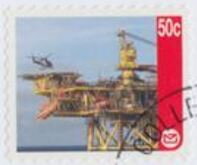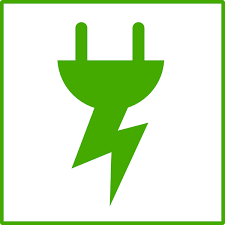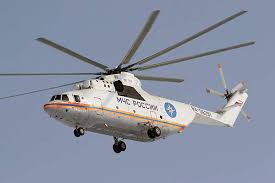Stamp: Maui Gas - Helicopter Landing on Yellow Platform (Personalized and Private Mail Stamps 2009)
Maui Gas - Helicopter Landing on Yellow Platform (Personalized and Private Mail Stamps 2009)
23 June (Personalized and Private Mail Stamps ) within release New Zealand : Custom Advertising Labels (CALs) goes into circulation Stamp Maui Gas - Helicopter Landing on Yellow Platform face value 50 New Zealand cent
| Stamp Maui Gas - Helicopter Landing on Yellow Platform in catalogues | |
|---|---|
| Colnect codes: | Col: NZ-CAL 2009-18 |
Stamp is square format.
Also in the issue New Zealand : Custom Advertising Labels (CALs):
- Stamp - Maui Gas - Aerial View of Drilling Platform face value 50;
- Stamp - Maui Gas - Drilling Platform in Sea face value 50;
- Stamp - Maui Gas - Helicopter Landing on Yellow Platform face value 50;
- Stamp - Maui Gas - Hoisting Platform Above Sea face value 50;
- Stamp - Maui Gas - Legs of Drill Rig in Sea face value 50;
- Stamp - Maui Gas - Map of Gas Fields face value 50;
- Stamp - Maui Gas - Network of Pipes face value 50;
- Stamp - Maui Gas - Platform and Large Ship face value 50;
- Stamp - Maui Gas - Technician on Platform at Sunset face value 50;
- Stamp - Maui Gas - Tower Under Tow By Tugboat face value 50;
- Booklet - Maui Gas Booklet face value 10*50;
Stamp Maui Gas - Helicopter Landing on Yellow Platform it reflects the thematic directions:
In physics, energy (from Ancient Greek ἐνέργεια (enérgeia) 'activity') is the quantitative property that is transferred to a body or to a physical system, recognizable in the performance of work and in the form of heat and light. Energy is a conserved quantity—the law of conservation of energy states that energy can be converted in form, but not created or destroyed. The unit of measurement for energy in the International System of Units (SI) is the joule (J).
A helicopter is a type of rotorcraft in which lift and thrust are supplied by horizontally spinning rotors. This allows the helicopter to take off and land vertically, to hover, and to fly forward, backward and laterally. These attributes allow helicopters to be used in congested or isolated areas where fixed-wing aircraft and many forms of short take-off and landing (STOL) or short take-off and vertical landing (STOVL) aircraft cannot perform without a runway.
An oil well is a drillhole boring in Earth that is designed to bring petroleum oil hydrocarbons to the surface. Usually some natural gas is released as associated petroleum gas along with the oil. A well that is designed to produce only gas may be termed a gas well. Wells are created by drilling down into an oil or gas reserve and if necessary equipped with extraction devices such as pumpjacks. Creating the wells can be an expensive process, costing at least hundreds of thousands of dollars, and costing much more when in difficult-to-access locations, e.g., offshore. The process of modern drilling for wells first started in the 19th century but was made more efficient with advances to oil drilling rigs and technology during the 20th century.



